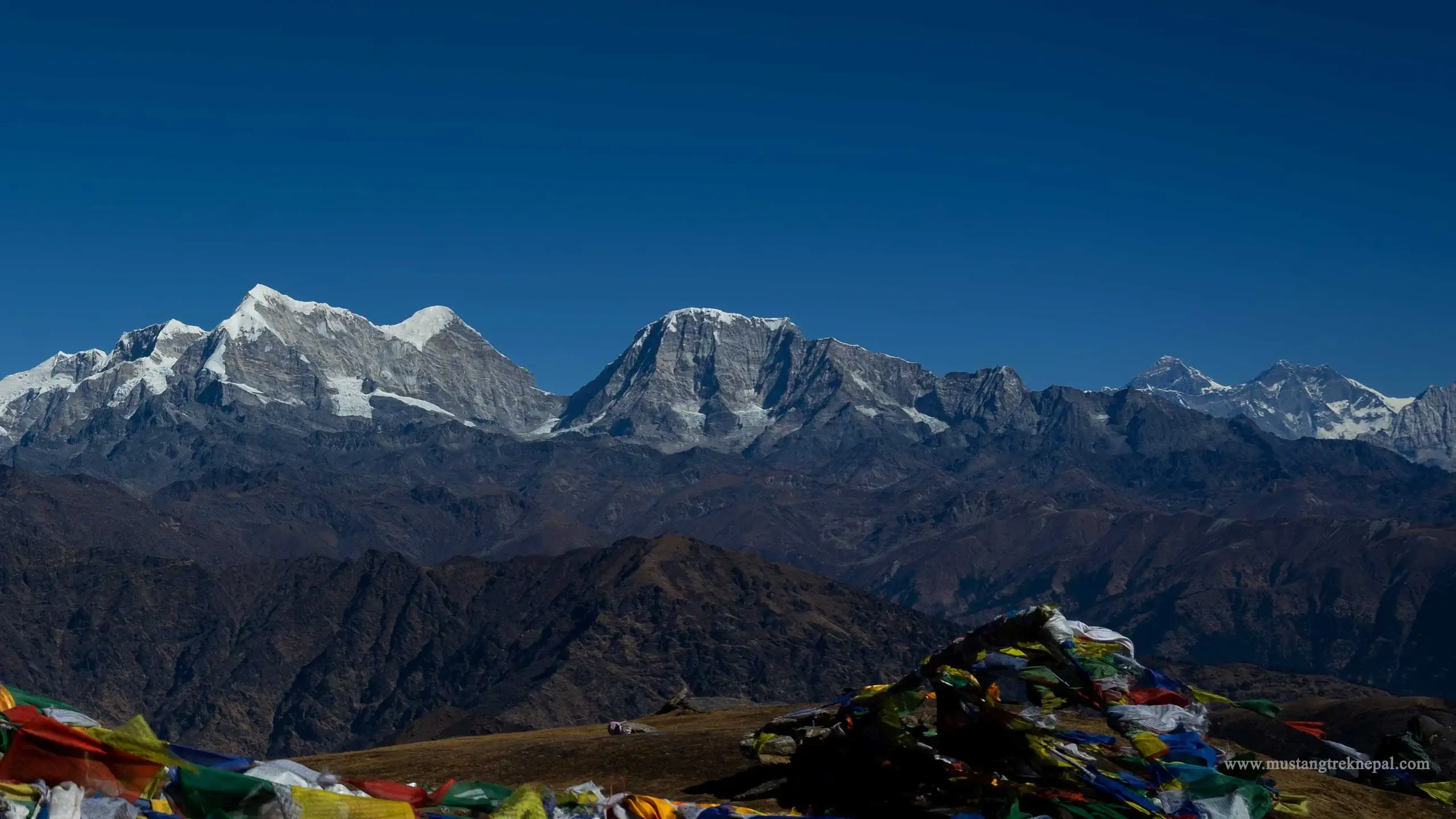Pikey peak trek package details

Pikey peak trek package details
The Pikey Peak trek is a journey that promises breathtaking vistas, cultural encounters, and a unique blend of natural beauty. With its towering peaks, lush landscapes, and warm local hospitality, this trek offers adventurers a chance to connect with nature and experience the authentic charm of Nepal. In this article, we will delve into the details of the Pikey Peak trek, exploring its route, highlights, cultural significance, and practical tips for those seeking to embark on this unforgettable journey.
The Pikey Peak Trek is a short but rewarding trek in the Everest region of Nepal. The trek offers stunning views of Mount Everest, Makalu, and other Himalayan peaks. The trail is well-maintained and easy to follow, making it a good option for beginner trekkers.
The Pikey Peak Trek starts from the Dhap village, which is about 6 / 7 hour drive from Kathmandu. The first few days of the trek are relatively easy, as the trail winds through forests and villages. As you get higher, the views of the mountains become more impressive.
The highlight of the trek is the summit of Pikey Peak, which is at an altitude of 4,067 meters (13,342 feet). From the summit, you can enjoy panoramic views of Everest, Makalu, Lhotse, Nuptse, and many other peaks.
The Route and Highlights:
The Pikey Peak trek is a moderately challenging trail that offers a perfect blend of natural and cultural attractions. The trek usually begins in the charming town of Jiri or Phaplu, both of which are accessible by road or a short domestic flight from Kathmandu. From there, trekkers wind their way through dense forests, quaint villages, and open meadows, all while enjoying panoramic views of some of the world’s highest peaks, including Everest, Lhotse, Makalu, and Kanchenjunga.
One of the highlights of the Pikey Peak trek is, of course, the summit itself. At an altitude of 4,065 meters (13,330 feet), Pikey Peak rewards trekkers with a stunning sunrise view that casts an ethereal glow over the surrounding peaks and valleys. The sight of the sun’s first rays illuminating the Himalayan giants is nothing short of awe-inspiring, making the early morning ascent well worth the effort.
Another unique aspect of the trek is the opportunity to witness traditional Sherpa and Tamang cultures up close. The trail passes through several ethnic villages, providing trekkers with a chance to interact with locals, learn about their way of life, and even participate in traditional ceremonies and dances. The Pikey Peak trek is a celebration of both natural and cultural diversity, making it a holistic and enriching experience.
Cultural Significance:
The Pikey Peak region holds immense cultural significance for the Sherpa and Tamang communities that call it home. Pikey, meaning “Sherpa deity of the sky,” is considered sacred by the local people. The area is frequented by pilgrims who pay their respects to the deity, especially during special occasions like the Sherpa festival of Dumji. This festival is marked by colorful processions, traditional dances, and religious rituals that provide a glimpse into the rich cultural tapestry of the region.
Moreover, the area is known for its ancient monasteries and stupas that dot the landscape. These religious sites not only add to the spiritual atmosphere but also showcase the intricate craftsmanship and architectural prowess of the local communities. Exploring these monastic sites along the trail offers trekkers a chance to connect with the spiritual essence of the Himalayas.
Practical Tips for Trekkers:
Embarking on the Pikey Peak trek requires careful planning and preparation. Here are some practical tips to ensure a successful and enjoyable journey:
Physical Fitness: While the trek is considered moderate in terms of difficulty, it involves several days of continuous walking and some steep ascents. Prior physical fitness and cardiovascular conditioning are recommended to tackle the challenges of the trail.
Best Time to Trek: The best time to undertake the Pikey Peak trek is during the spring (March to May) and autumn (September to November) seasons. These periods offer stable weather, clear skies, and the best views of the Himalayan range.
The Pikey Peak Trek is a great option for those who want to experience the beauty of the Everest region without having to do a long and challenging trek.
Permits and Accommodation: Trekkers need to obtain the required permits before starting the trek. The trail offers a mix of teahouse and camping accommodations. Teahouses provide basic amenities and the opportunity to interact with fellow trekkers and locals.
Pack Wisely: Pack appropriate clothing for varying weather conditions, including warm layers, rain gear, and comfortable hiking boots. Don’t forget essentials like a good quality sleeping bag, water purification tablets, and a first aid kit.
Respect Local Culture: As you pass through villages and religious sites, it’s essential to respect the local culture and traditions. Seek permission before taking photographs of people, and dress modestly, especially in religious areas.
Hydration and Altitude: Stay hydrated throughout the trek and acclimatize gradually to the increasing altitudes. Listen to your body and take rest days as needed to avoid altitude sickness.
In Conclusion:
The Pikey Peak Trek is a relatively easy trek, making it a good option for beginner trekkers. The Pikey Peak trek is a journey that encapsulates the essence of the Himalayas—majestic peaks, serene landscapes, and vibrant cultures. It offers trekkers a chance to step away from the hustle and bustle of everyday life and immerse themselves in the tranquility of nature. The combination of natural beauty, cultural encounters, and physical challenge makes the Pikey Peak trek a truly unforgettable experience. As you navigate the winding trails and ascend to the summit, you’ll not only witness the grandeur of the mountains but also discover the hidden treasures of Nepal’s heartland.
